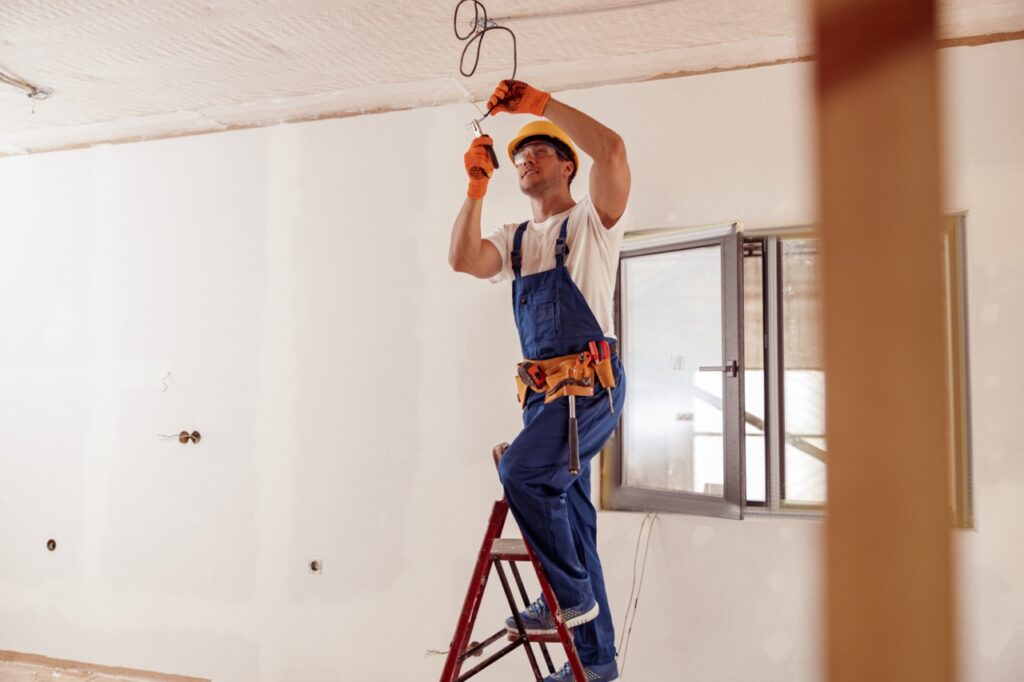A Complete Guide to Electrical Cabling
In the realm of home renovation or construction, understanding the intricacies of electrical cabling is paramount. This guide will provide you with a comprehensive overview of the subject, helping to clarify the complex world of cables, wires copper conductors, and circuits that power our homes and offices. For more detailed information, you can also visit the Wikipedia page on electrical wiring.
Understanding Electric Cables
Power cables, at its most basic, refers to the insulated conductors used to transmit electricity from the source to the devices that use it. These cables are made up of three essential components: the conductor, the insulation, and the protective sheath.
Conductor: This is the wire that carries the electrical current. It’s typically made of copper or aluminium because of their high conductivity.
Insulation: Surrounding the surface of the conductor is the insulation, a material typically made of plastic or rubber. Its role is to prevent electric shocks and to keep the electricity flowing in the right direction.
Protective Sheath: Lastly, there’s the protective, metal sheath, which encases the insulated conductors. This outer sheath provides additional protection against physical damage and environmental conditions.
Types of Electrical Cables
Understanding the different types of electrical cables is essential, as each has its unique characteristics and uses. Here are some of the most common types:
Single-core Cables
These cables have only one conductor and are mainly used for transmission of low voltage applications, such as lighting circuits.
Multi-core Cables
As the name suggests, these have multiple conductors, each insulated from one point to another. They’re used in a range of high power applications, like power supply to buildings.
Coaxial Cables
These are used for transmitting high-frequency signals, such as those for televisions and internet connections.
Ethernet Cables
These are used for network connections, providing a wired internet connection.
Flexible Cable
Flexible cables, as their name suggests, are designed for situations where flexibility is required. These cables can bend easily without damaging the conductors or insulation, making them perfect for portable devices, machinery, and equipment that need to move during operation. They consist of multiple thin strands or lengths of wire, as opposed to a single, thick wire, which allows them to bend without breaking. Common types of flexible cables include extension leads, appliance cords, and power supply cords. In addition, flexible cables are often used in industrial applications, robotics manufacturing, and other environments where cables need to withstand frequent movement or vibration.
Steel Wire Armoured Cables
Steel Wire Armoured (SWA) cables are a unique type of electrical cable designed for heavy-duty applications. They are constructed with a layer of solid steel wire armouring, which provides exceptional mechanical protection, making them suitable for use in harsh environments and areas with a high risk of physical damage. This makes SWA cables ideal for outdoor use, for direct burial, within cable ducts, or for installations where the cable may be exposed to mechanical stress. Despite their rugged construction, these cables still maintain a degree of flexibility, making them versatile for various industrial and commercial applications. They are often used in all power transmission networks, including underground, external and internal projects, as well as in cable networks, power stations, and industries.
Safety Regulations and Standards
In the UK, electrical installations must adhere to the British Standard BS 7671:2018, also known as the ‘Wiring Regulations’. This standard, published by the Institution of Engineering and Technology (IET), outlines the safety requirements for electrical installations.
It’s important to note that all electrical work in the UK, apart from some minor tasks, must be carried out by a competent person. This could be a professional electrician or someone who has undertaken appropriate training.
Professional Electrical Cable Installation and Maintenance
While some minor electrical tasks can be performed by a DIY enthusiast, most electrical work should be left to professionals. Improper installation can lead to serious safety issues, including electrical fires and electrocution. A certified electrician can ensure the work is done safely and meets all relevant regulations.
Regular maintenance of your electrical wiring is also crucial to protect and ensure its safe operation. Over time, cables can deteriorate, leading to potential safety hazards. Having your wiring inspected and tested by a professional every few years can help to prevent these issues.
Conclusion
Understanding electric cable can seem like a daunting task, but with a bit of knowledge and understanding, it becomes far more approachable. However, remember that while it’s beneficial to understand the basics, any significant electrical work should be left to the professionals. Safety should always be the first priority when dealing with electricity.
For more in-depth information, please visit the Wikipedia page on electrical wiring.

 same day delivery
same day delivery
 20,000+ stock, great deals!
20,000+ stock, great deals!
 Experienced staff on hand
Experienced staff on hand
